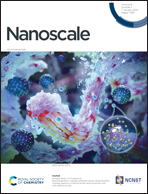Promising ultra-short channel transistors based on OM2S (M = Ga, In) monolayers for high performance and low power consumption†
Abstract
It is hoped that two-dimensional (2D) semiconductors overcome the short channel effect and continue Moore's law. However, 2D material-based ultra-short channel devices still face the challenge of simultaneously achieving high-performance (HP) and low-power (LP) consumption. Here, we theoretically designed monolayer OM2S (M = Ga, In)-based metal–oxide–semiconductor field-effect transistors (MOSFETs), considering the gate length from 1 to 5 nm, doping concentration and underlap structure. We found that in HP (LP) applications, the on-state current exceeds 1000 (500) μA μm−1 under a 1 nm (2 nm) gate length, surpassing the needs of the International Technology Roadmap for Semiconductors (ITRS) in 2028. The subthreshold swing is close to the Boltzmann tyranny (60 mV dec−1) even as the gate length shrinks to 2 nm. The energy-delay product is two orders lower than 1.02 × 10−28 J s μm−1, indicating extraordinary high-speed manipulation and low-energy expending. Therefore, monolayer OM2S has great application in ultra-short scale devices with HP and LP consumption, and can be taken as a candidate to extend Moore's Law.



 Please wait while we load your content...
Please wait while we load your content...